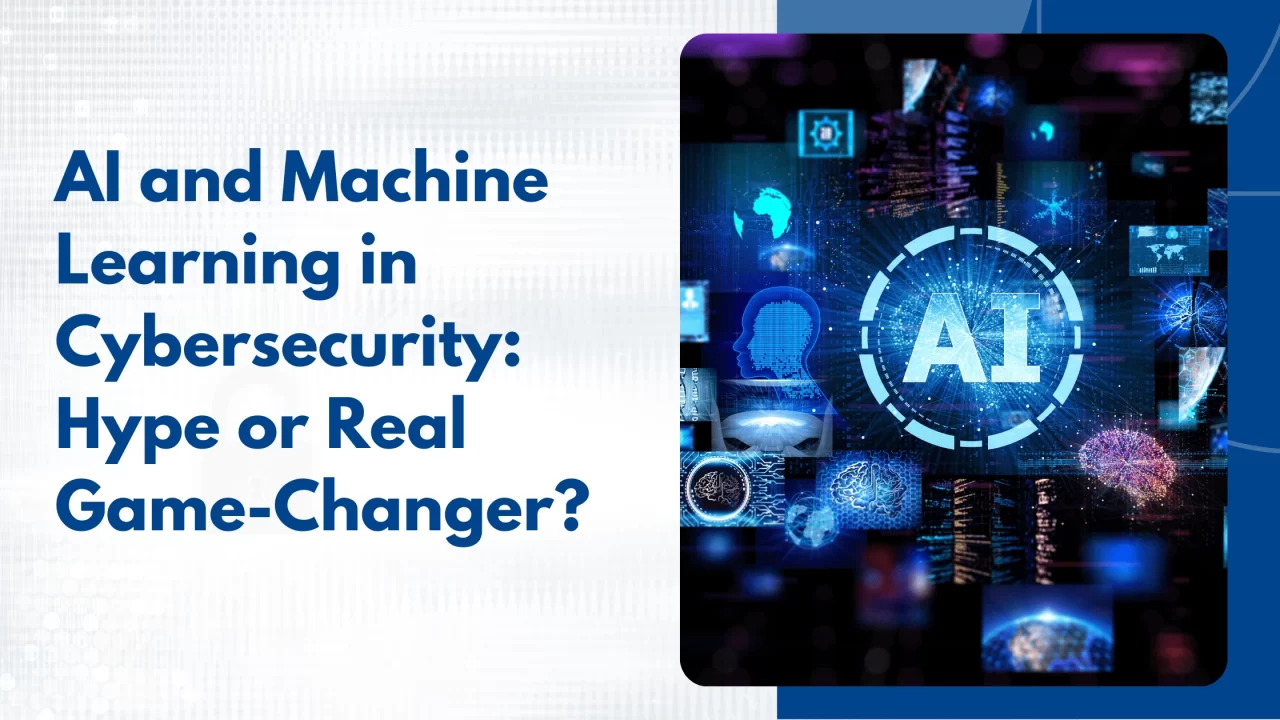Artificial Intelligence (AI) and Machine Learning (ML) have taken centre stage across industries, and cybersecurity is no exception. With rising cyber threats, increasingly complex attack vectors, and a rapidly expanding digital footprint, traditional security measures are struggling to keep pace. Enter AI and ML—technologies that promise to transform how organisations detect, respond to, and prevent cyberattacks.
But is AI in cybersecurity just hype? Or is it a real game-changer? Let’s explore how AI and ML are reshaping cybersecurity, their benefits and challenges, and practical examples of their application in real-world scenarios.
How AI is Transforming Threat Detection and Response
The traditional approach to cybersecurity has relied heavily on signature-based detection, rule-based systems, and manual monitoring. These methods, though still valuable, are increasingly ineffective against sophisticated and evolving threats like zero-day vulnerabilities, advanced persistent threats (APTs), and polymorphic malware.
Here’s how AI and ML are making a difference:
- Real-Time Threat Detection
AI systems can continuously monitor vast volumes of network traffic and system activity to detect anomalies. Unlike static rules, ML algorithms learn from historical data and adapt to evolving threats, improving accuracy over time.
- Behavioural Analysis
Instead of looking for known malware signatures, AI tools analyse user and system behaviour to detect deviations. This is particularly effective in identifying insider threats or compromised credentials.
- Automated Incident Response
AI can trigger predefined responses—such as isolating a device from the network or alerting the security team—within seconds of detecting malicious activity. This reduces reaction time and limits potential damage.
- Threat Intelligence Correlation
AI aggregates data from multiple threat intelligence feeds and security tools, correlating patterns and providing context-aware insights. This helps security analysts prioritise threats and respond faster.
Benefits and Risks of AI-Driven Security Solutions
AI and ML bring numerous advantages to the cybersecurity landscape, but they’re not without challenges. Understanding both sides of the equation is essential for effective adoption.
Benefits:
- Speed and Scalability: AI can process and analyse massive datasets far quicker than any human analyst, making it ideal for detecting attacks in real time.
- Accuracy and Adaptability: ML models improve with time, reducing false positives and enhancing precision in threat detection.
- 24/7 Monitoring: AI doesn’t sleep. It ensures round-the-clock vigilance, essential in detecting and responding to global threats.
- Proactive Defence: AI can predict potential threats before they materialise, enabling pre-emptive actions rather than reactive ones.
Risks and Challenges:
- Data Bias and Quality: AI is only as good as the data it’s trained on. Poor-quality or biased datasets can result in ineffective models.
- Over-Reliance on Automation: While automation boosts efficiency, excessive dependence may lead to blind spots or unmonitored vulnerabilities.
- Adversarial AI: Hackers can use AI to develop intelligent malware capable of evading detection, or even poison AI training data.
- Complexity and Cost: Building, training, and maintaining AI-based systems require skilled personnel and investment, posing a challenge for smaller organisations.
Real-World Examples of AI in Cybersecurity Applications
The deployment of AI in cybersecurity is already underway, with many companies and platforms integrating ML-driven tools into their security infrastructure.
- Email Threat Detection
AI is widely used in filtering phishing emails and flagging malicious attachments or suspicious links. ML algorithms learn from user behaviour to improve detection accuracy over time.
- Network Intrusion Detection Systems (NIDS)
Advanced NIDS platforms use AI to spot anomalies in traffic patterns, indicating potential breaches or command-and-control communications.
- Endpoint Security Platforms
AI-driven endpoint security solutions can monitor device behaviour, detect ransomware activity, and automatically isolate infected systems to prevent lateral spread.
- User and Entity Behaviour Analytics (UEBA)
UEBA tools use AI to establish baselines for normal user activity. When a deviation occurs—such as a login from an unusual location—it triggers an alert, helping identify compromised accounts early.
- Fraud Detection in Financial Services
Banks and fintech companies use AI to monitor transaction patterns in real-time, flagging anomalies that suggest fraud or account compromise.
- Threat Hunting Platforms
Cybersecurity teams use AI to sift through logs, telemetry, and threat intel to proactively hunt for hidden threats.
Conclusion: Hype or Game-Changer?
AI and ML are not just buzzwords—they are proving to be transformative technologies in the fight against cybercrime. While challenges like data quality, complexity, and adversarial threats must be addressed, the potential of AI in creating faster, smarter, and more adaptive security systems is undeniable.
As cyberattacks become more frequent and sophisticated, businesses that embrace AI-driven security solutions will be better equipped to anticipate threats, minimise risks, and stay ahead of attackers.
In short, AI is not just the future of cybersecurity—it is the present. And yes, it’s a real game-changer.



